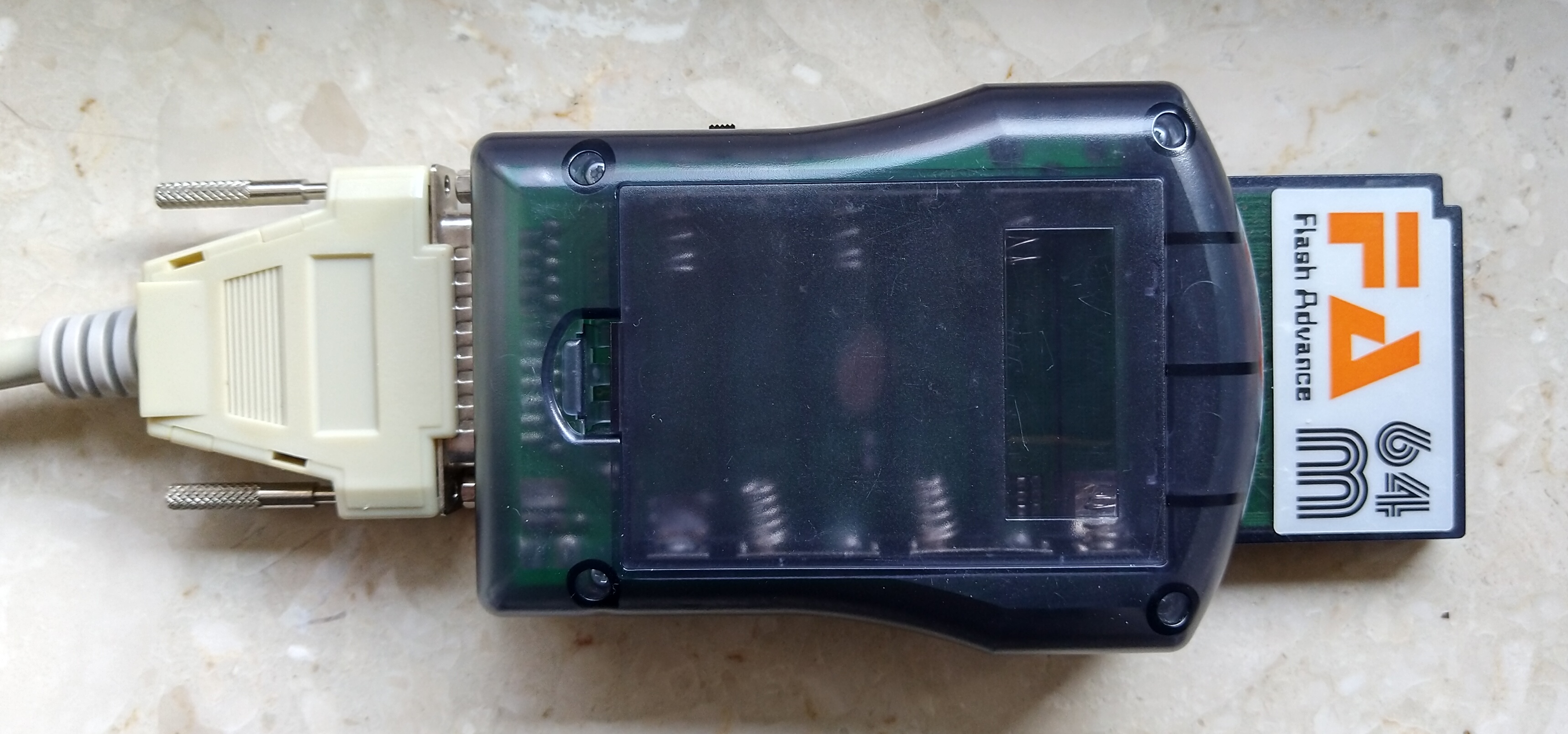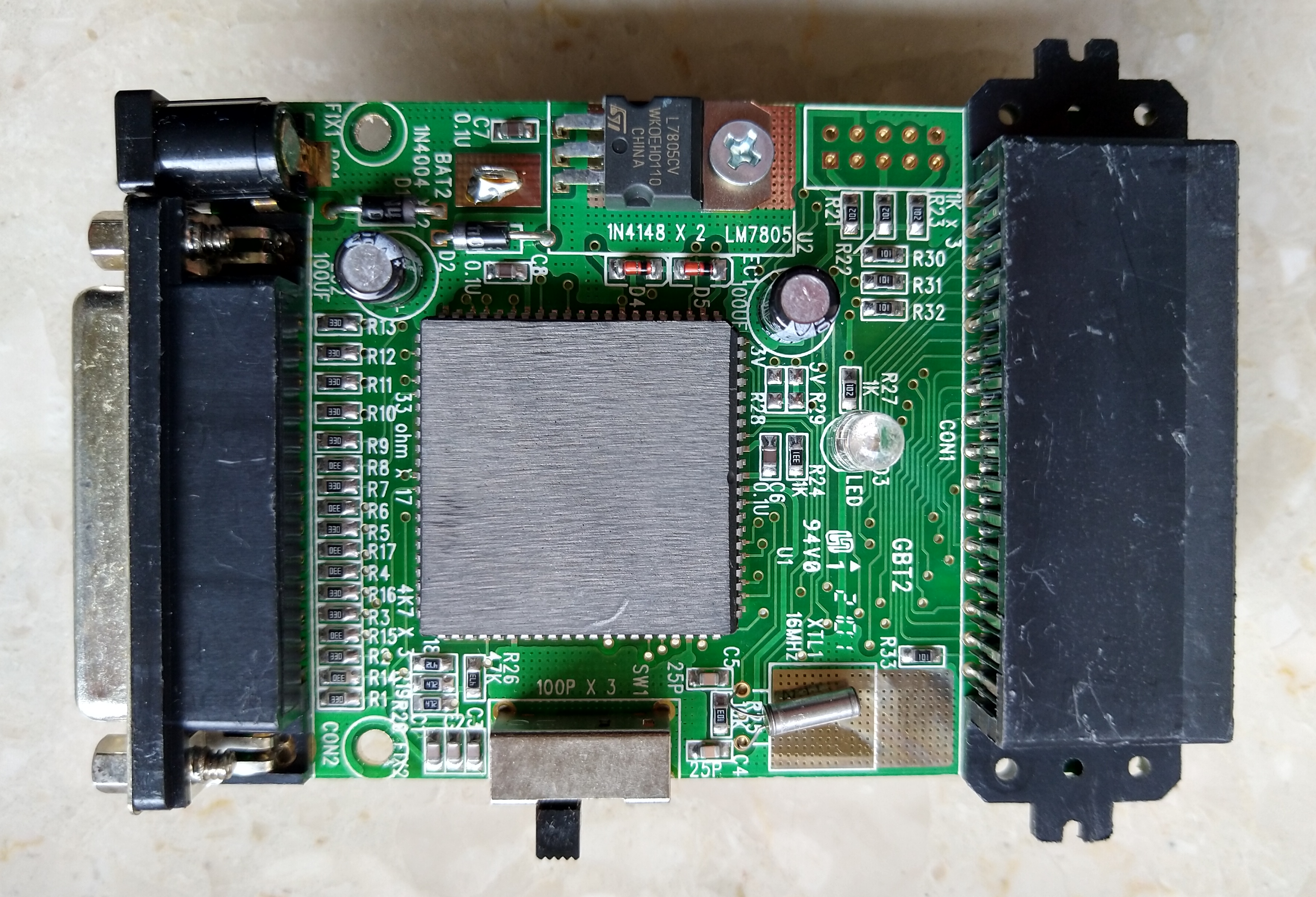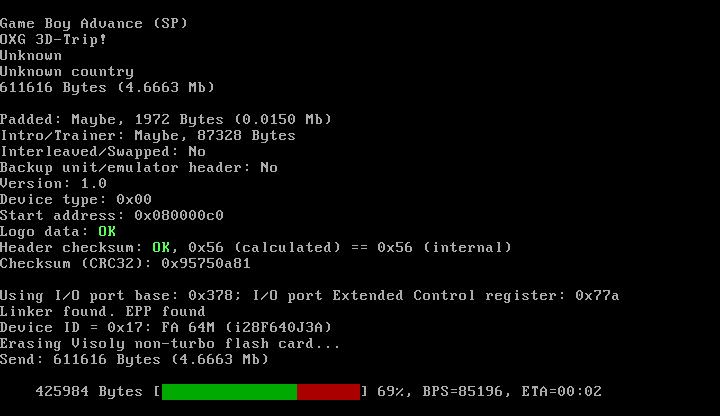GBA nostalgia and the Flash Advance Linker
Frederic Cambus March 17, 2022 [Miscellaneous]I got involved with Game Boy Advance development in 2001 shortly after the release of the device on the European market.
At the time, the PC demoscene had already moved to producing those horrible hardware-accelerated 3D demos and it was time for me to move on. In my eyes, the GBA scene provided a refuge for the 2D and bitmapped graphics lovers, and so I spent some time playing with the device.
The scene was very active and the gbadev.org site provided a lot of resources for homebrew developers. At the same time, the release groups were not in rest, providing a continuous supply of lovely cracktros and trainers. Some demoscene productions were also released on this platform, and I fondly remember Gameboy Advance 3D-Trip by Oxygene, and Kance by Condense.
During this period, I acquired a pre-owned Flash Advance Linker, a device manufactured by Visoly in 2001. Because the previous owner was also selling his GBA, I ended up owning two of them. As my plan back then was to pursue the idea of developing a multiplayer puzzle game, on the hardware side at least, I had everything I ever needed.
Life happened though, things didn't exactly go as planned and I had to sell the two GBAs temporarily, or so I thought. I kept the linker though, and when I acquired the HP t5570e and HP t510 thin clients back in 2017, it meant that I finally had some devices with a parallel port again.
Here is the device in full glory:

And here is the PCB:

I'm happy to announce that after 20 years, the linker is still working! Back in the days, I was using uCON64 to transfer data to the flash cart. Not only is it still being maintained, but it still has releases for DOS, so I went this route to bring things back to life.
uCON64 uses LPT1 by default when using the Flash Advance Linker, so we can simply send and receive ROMs to/from the flash cart with the -xfal option. As it outputs ANSI escape sequences for displaying its progress bar, we need to have an ANSI driver running, either ANSI.SYS on MS-DOS or NANSI.SYS on FreeDOS.
uCON64 sending a ROM to the Flash cart:

uCON64 receiving a ROM from the Flash cart:

The cartridge still works flawlessly and I was able to run some demos again on the Revo K101 a friend donated a couple years ago. This sure brings back memories...
Lastly, here is an old article from Wired about this wonderful little device.